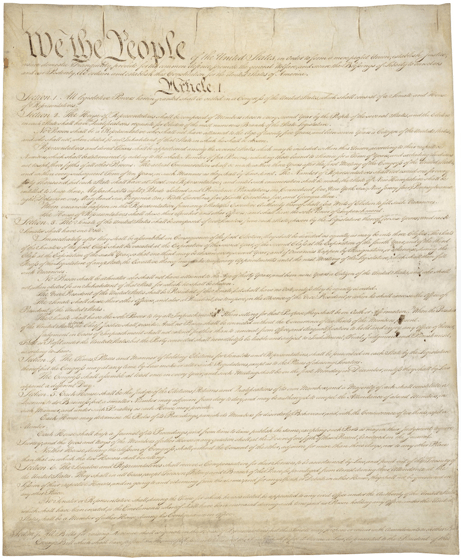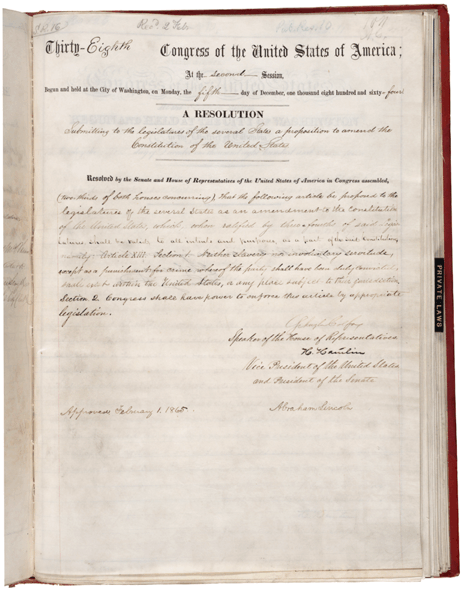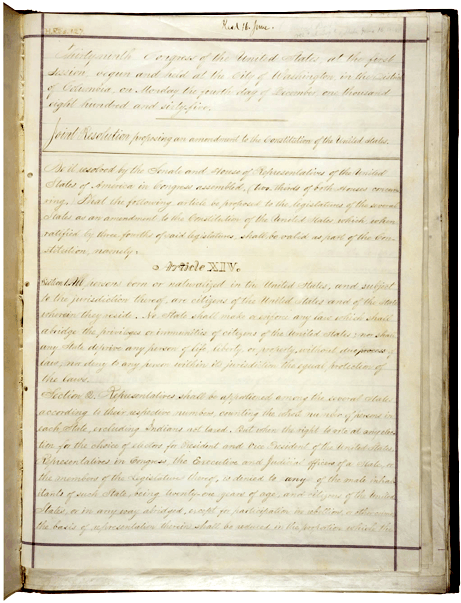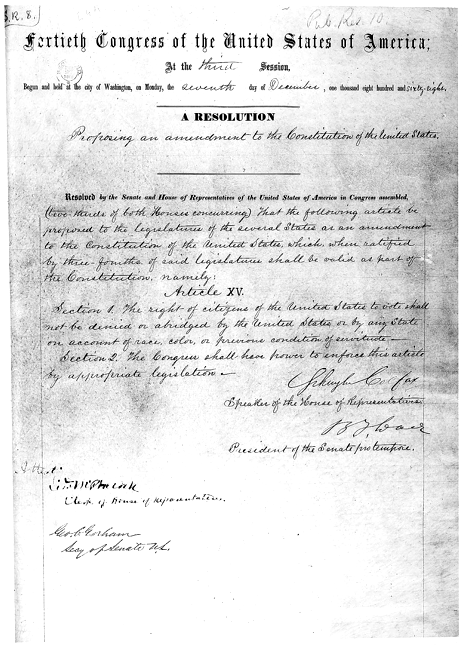|
The
U.S. Constitution
and the Reconstruction Amendments The U.S. Constitution lists the basic rules and the responsibilities of the federal and state governments. It was written in 1787, and is "the supreme law of the land." Laws passed by Congress or by state governments that violate its basic principles are considered not valid laws at all. The Constitution can be changed or expanded with amendments. Any such changes must be approved by vote of the states before they can take effect. During the Reconstruction Era, three very important amendments were approved: the 13th, 14th, and 15th. These three amendments are often referred to as "The Reconstruction Amendments." |
 |
|
The 13th Amendment ended slavery
The 13th Amendment prohibits slavery in the United States. Notice at the bottom of the page that it was signed by President Abraham Lincoln in February of 1865. That was just weeks before he was assassinated. The amendment was officially approved by the states later that year. |
What it says:
"Neither
slavery nor involuntary
servitude, except as punishment for crime whereof the party
shall have been duly convicted, shall exist within the United
States, or any place subject to their jurisdiction."
"Congress shall have power to enforce this article by appropriate legislation." involuntary servitude = forced labor duly = properly, according to law convicted = found guilty by a court jurisdiction = authority enforce = make sure it is obeyed legislation = laws |
 |
|
The 14th Amendment:
citizenship and equal rights The 14th Amendment says that anyone born in the United States is a citizen of the U.S. and of the state in which he or she lives. It also says that states cannot deny to any person "equal protection of the laws." It took effect in 1868. This amendment was aimed at protecting the rights of freed slaves in the South. It repeats many phrases from the Civil Rights Act of 1866. An amendment to the Constitution, however, has an even stronger legal power than the regular laws passed by Congress. It is also much harder to change or take away. |
What it says:
"All persons born or
naturalized in the United States, and subject to the jurisdiction
thereof, are citizens of the United States and of the state wherein
they reside."
"No state shall ... deprive any person of life, liberty, or property without due process of law; nor deny to any person ... the equal protection of the laws." naturalized = made a new citizen by law jurisdiction = authority citizen = a person with full rights and responsibilities to vote, hold office, etc. wherein = in which due process = the step-by-step process of law, carried out in a fair manner |
 |
|
The 15th Amendment: voting rights
The 15th Amendment was passed to guarantee African American men the right to vote. It was approved in 1870. (Women did not win the right to vote nationwide until 1920, after the passage of the 19th Amendment.) |
What it says:
"The right of citizens of the Unites States
to vote shall not be denied or abridged by the United States or by any
state on account of race, color, or previous condition of servitude."
"The Congress shall have power to enforce this article by appropriate legislation." denied = taken away abridged = limited, restricted servitude = being subject to an owner or master, being a slave legislation = laws |
 |